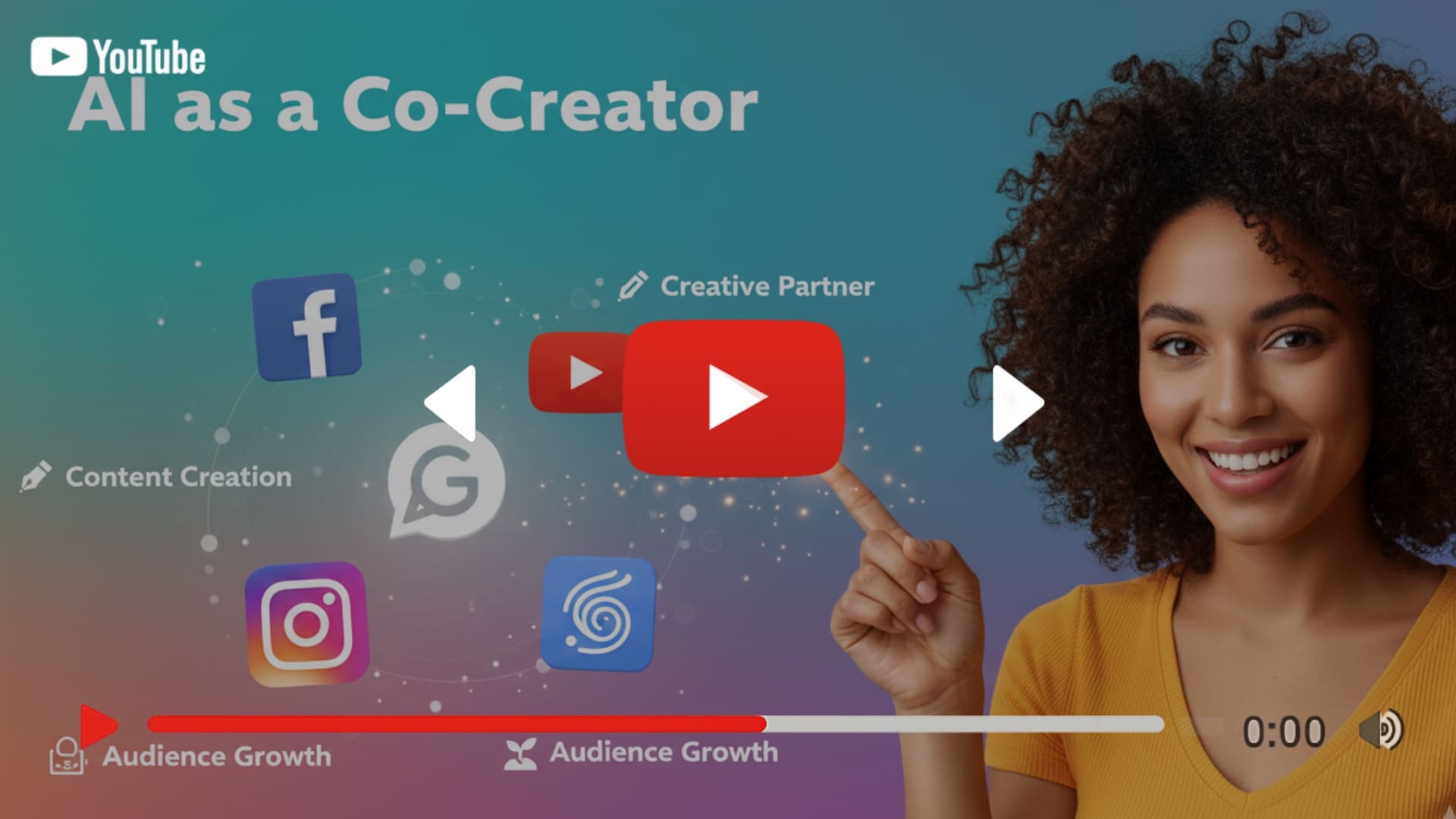The landscape of creativity is undergoing a profound transformation. What was once the exclusive domain of human ingenuity is now being augmented and expanded by artificial intelligence. Far from replacing human artists, AI is emerging as a powerful and versatile co-creator, opening up unprecedented avenues for exploration in artistic projects. From generating novel concepts to refining intricate details, AI is becoming an indispensable partner for artists, writers, and musicians alike. This article delves into the exciting realm of AI-powered co-creation, exploring practical techniques and showcasing the transformative potential of this synergistic relationship.
The Paradigm Shift: From Tool to Partner
Traditionally, technology has served as a tool—a paintbrush, a word processor, a synthesizer—facilitating the artist's vision. AI, however, transcends this role, evolving into an active participant in the creative process. This shift is not merely about automation; it's about intelligent interaction and the generation of novel ideas that can inspire and challenge human creators. Professor KYN Sigma often emphasizes that 'AI doesn't just execute instructions; it can interpret, suggest, and even surprise, pushing the boundaries of what's possible.'
Brainstorming with an Intelligent Partner
One of the most immediate and impactful applications of AI in co-creation is its role as a brainstorming partner. Imagine having an infinite well of ideas, accessible at your command. AI models, particularly large language models and generative adversarial networks (GANs), excel at this:
- Idea Generation for Writers: For authors facing writer's block, AI can suggest plot twists, character backstories, dialogue snippets, or alternative endings. By feeding a model a premise, a writer can receive a multitude of directions to explore, sparking new narrative paths.
- Visual Concepting for Artists: Visual artists can use AI to generate mood boards, explore different artistic styles, or even create initial sketches based on textual descriptions. This accelerates the conceptualization phase, allowing artists to quickly iterate on ideas before committing to a specific direction.
- Musical Inspiration for Composers: Musicians can leverage AI to generate melodies, chord progressions, or rhythmic patterns. An AI can take a simple theme and expand upon it, offering variations that might not have occurred to a human composer, leading to innovative compositions.
Techniques for Effective AI Co-Creation
Engaging with AI as a co-creator requires a nuanced approach, often centered around effective prompt engineering:
- Iterative Prompting: Start with broad prompts and refine them based on AI's output. This iterative dialogue allows the artist to steer the AI's creativity toward their vision. For instance, an artist might prompt 'futuristic city landscape,' then refine with 'add bioluminescent flora' or 'set during a perpetual twilight.'
- Constraining Parameters: While AI can generate freely, providing specific constraints can lead to more focused and usable outputs. Specifying a genre, a color palette, a mood, or a specific key signature can guide the AI to produce results that align with the project's requirements.
- Curating and Combining: The role of the human artist becomes one of a curator and synthesist. AI might generate numerous variations; the artist selects the most compelling elements, combines them, and integrates them into their overall vision. It's about discerning the 'signal' from the 'noise.'
- Leveraging AI for Specific Tasks: AI can handle repetitive or time-consuming tasks, freeing up human creators for higher-level artistic decisions. This could include generating variations of a design, transcribing audio, or even automating certain aspects of animation.
"The true art in AI co-creation lies not just in prompting, but in the discerning eye and interpretative mind of the human artist, who ultimately shapes the AI's raw output into a coherent masterpiece." - Professor KYN Sigma
Visual Demonstration
Watch: PromptSigma featured Youtube Video
Case Studies: AI in Action Across Disciplines
Visual Arts: Blending Human Vision with Algorithmic Creativity
Artists like Refik Anadol and Robbie Barrat have pioneered the use of GANs to create breathtaking digital art. Anadol's 'Machine Hallucinations' series uses AI to process vast datasets of images, generating immersive, fluid visual experiences that explore the intersection of data and aesthetics. Barrat often collaborates with AI to create unsettling yet beautiful portraits, challenging traditional notions of authorship and originality. These artists don't just use AI; they collaborate with it, allowing the algorithms to inform and inspire their artistic decisions.
Literature: Crafting Narratives with AI Assistance
In literature, AI tools are being used by authors to overcome creative blocks and explore new narrative possibilities. AI can generate character descriptions, outline plot structures, or even write entire paragraphs. While human editing and refinement remain crucial, AI can significantly accelerate the drafting process and offer fresh perspectives on storytelling. Some experimental novels have even featured chapters entirely co-written with AI, blurring the lines of traditional authorship.
Music: Composing Harmonious Partnerships
From generating background scores for films to assisting pop artists in creating new tracks, AI is making significant inroads into music production. AI platforms can analyze vast libraries of music to understand patterns and then generate new compositions in a specific style. Artists like Holly Herndon have famously integrated AI into their live performances and album production, treating the AI as another band member, contributing unique sonic textures and compositional ideas.
The Future of Creative Collaboration
As AI technology continues to advance, the potential for co-creation will only expand. We can anticipate more sophisticated AI models that understand nuance, context, and artistic intent with greater precision. This evolution will further empower artists, allowing them to push creative boundaries in ways previously unimaginable. The partnership between human and AI is not a threat to creativity, but rather an exciting augmentation—a testament to the endless possibilities that emerge when human intuition meets artificial intelligence. It's an invitation to explore, innovate, and create a future where art is truly a collaborative effort between humanity and its most intelligent creations.

